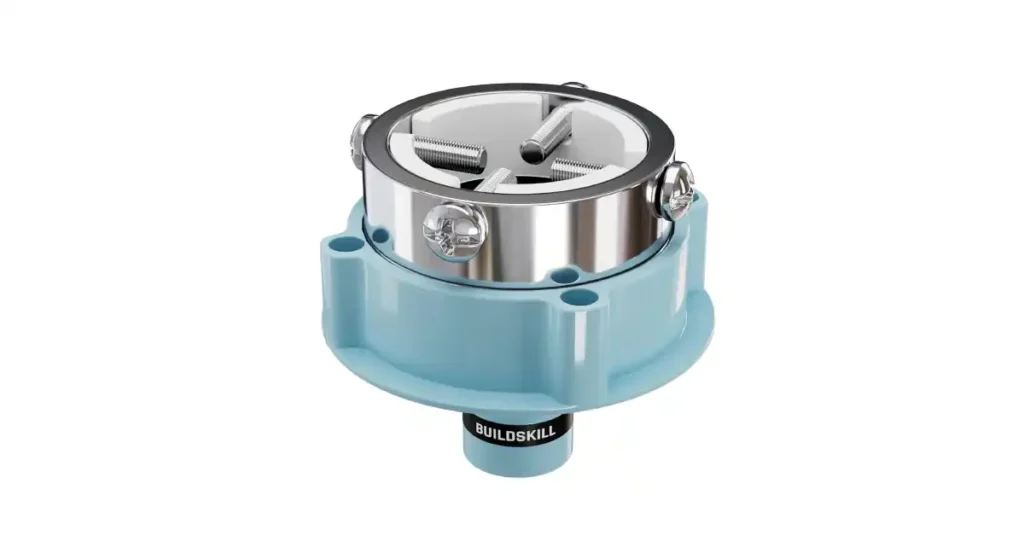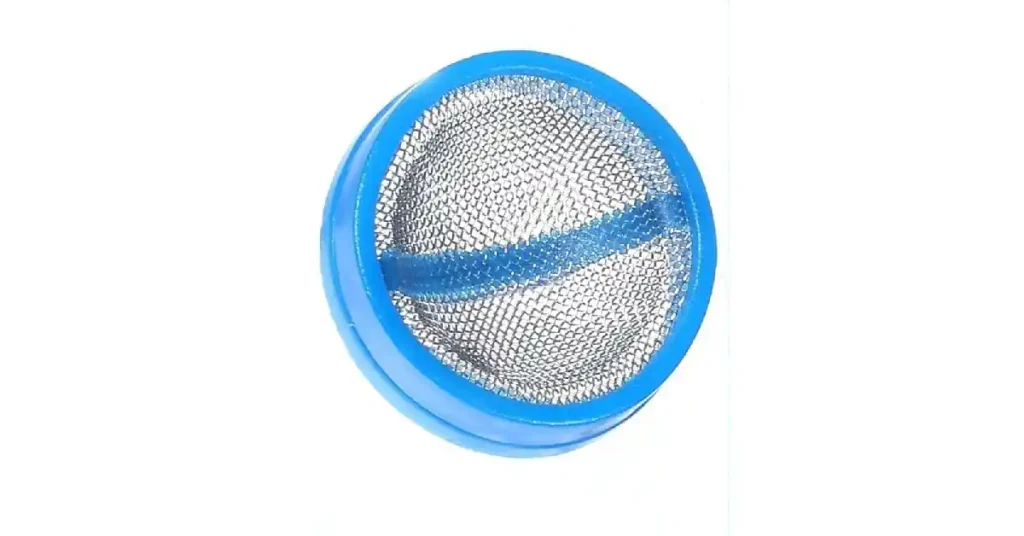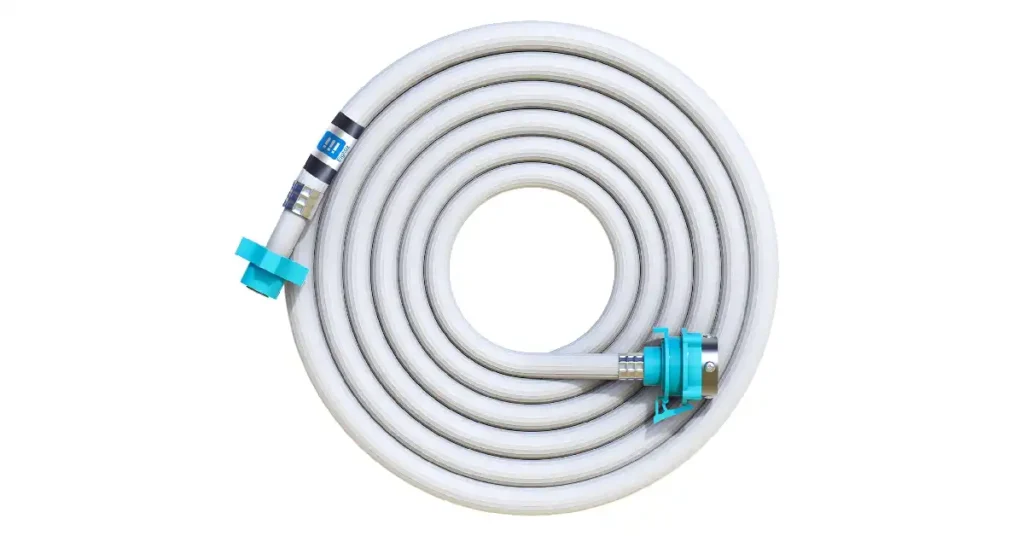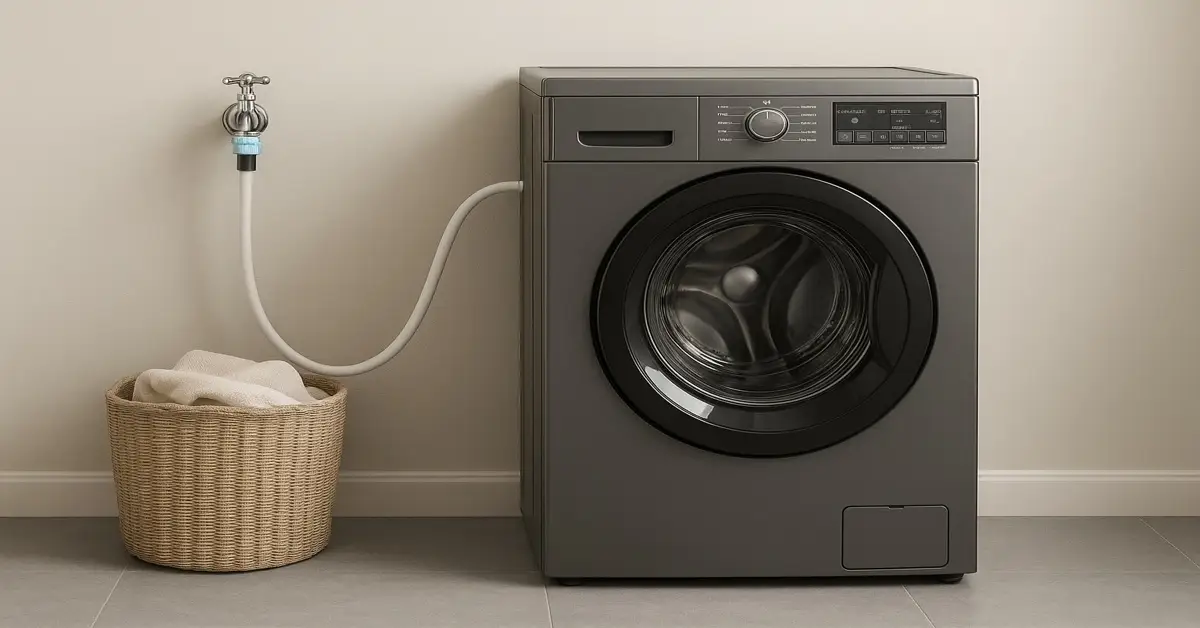If your washing machine suddenly refuses to draw water or you hear a leaky tap sound, do not panic. Learning how to fix washing machine tap is surprisingly simple — and in most cases, you don’t need a plumber.
In this guide, taken from personal experience and proven repair methods, I will walk you through fixing, connecting, or replacing washing machine taps the right way for Indian household setups.
Why Your Washing Machine Tap Needs Attention

Image credit: Buildskill
In an unwanted scenario, a faulty tap or loose connector results in:
- Persistent water leak.
- Low water pressure
- The inlet hose pipe is difficult to connect.
In India, where most homes use fully automatic washing machines with a single water inlet hose pipe, even a small tap issue can disrupt your laundry schedule.
Also Read: How to Use Automatic Washing Machine Step-by-Step
How to Fix Washing Machine Tap – Steps by Step Guide
Here is how I deal with a leaky washing machine tap at home in India-well, using simple tools, quick checks, and clean finishes.
Tools & Materials
- Wrench/plier, screwdriver.
- Teflon tape (aka plumber’s tape).
- Small brush/old toothbrush.
- Replacement washer/O-ring or tap adapter for washing machine ½” / 15 mm BSP, most common in India.
- Microfibre cloth/bucket.
Safety First
- Turn off the water supply at the wall valve or main line pipe.
- Unplug the washing machine. Keep the area dry to avoid slipping.
#1. Identify where the leak is
- From the tap spout/nozzle? Likely a worn washer or cartridge.
- From the threaded connection where the inlet hose meets the tap/adapter? Poor sealing or cross-thread probably.
- From the machine side? Check the water inlet joint and filter.
#2. Disconnect the inlet hose
- Place a bucket below.
- Using a wrench, try loosening that nut slightly, then remove the inlet hose from the tap. Do not force it to avoid stripping the thread.
#3. Clean the washing machine’s inlet filter
- At the machine’s water inlet, pull out the tiny mesh filter.
- Clean the water inlet filter with a brush and rinse it. Refitting it will improve the water pressure and prevent future leaks.
#4. Reseat and seal the tap threads
- Wipe the tap’s external threads dry.
- You can put plumber’s tape around the external connection of the tap (8-10 turns clockwise using Teflon tape).
- If you use an adapter (normal water tap to inlet hose): fit the adapter first, then the hose. Get sturdy brass/stainless options.
#5. Replace worn washers/O-rings (if dripping from spout)
- Slowly pry open this cap on top of the tap handle (the small decorative cap).
- Unscrew the handle screw, remove the handle, and open the valve body.
- Check the washer/O-ring; replace it with a new one if it is squashed, cracked, or hardened (which is often the case in hard-water areas).
- Reassemble the valve and tighten it gently, making sure not to over-tighten.
#6. Reconnect and align the inlet hose
- Hand-tighten the hose nut so it will not be cross-threaded, then tighten it with a wrench.
- The squeaking/sticking means you entered with too much force. Back off a few turns and realign. The goal is smooth threading and a firm seat.
#7. Pressure test & verify
- Slowly open the water supply.
- Monitor every fitting-connector, adapter, inlet, and hose.
- If you spot a leak, tighten a quarter turn; still wet? Remove, re-wrap with Teflon, and refit.
#8. When to replace parts
- Corrosion of the valve/tap model or damaged threads, or occasional leaks, are all reasons to replace the tap/adapter.
- For the most convenient and reliable one, install a wall-mounted washing machine faucet with a dedicated water supply hose.
Also Read: How Many Clothes in 6kg Washing Machine?
Pro Tip: Clean the Water Inlet Filter Regularly

Hard-water deposits are a common problem in cities like Delhi, Pune, and Bangalore. They clog the washing machine’s inlet filter over time, greatly reducing water flow and consequently chances of leakage. Clean the mesh once every three or four months to ensure smooth washing.
Also Read: Top 5 Washing Machine Brands in India 2025 – Specs, Price & Reviews
How to Connect a Washing Machine Hose to a Normal Tap

If you have a regular tap instead of a washing machine faucet:
- Get a tap adapter for the washing machine (preferably brass or stainless steel).
- Connect the adapter to your faucet.
- Securely insert the inlet hose and tighten it with a wrench.
When to Replace the Tap
If:
- The valve has been corroded.
- The threads are damaged.
- Leaks occur even after sealing.
It’s time to replace it with a new tap model suitable for the washing machine water supply hose. A wall-mounted kind would make it more convenient in Indian laundry spaces.
Also Read: What Does IE Mean in LG Washing Machine? 5 Easy Steps for Indian Homes
FAQs
Can I install a washing machine tap myself?
Yes, you can install a washing machine tap yourself with general tools like a wrench, Teflon tape, and a suitable adapter. It would be advisable to turn off the main water supply before proceeding for safety.
How to fix a leaking tap for a washing machine?
Switch off the water supply, disconnect the hose inlet, clean the water inlet filter, and wrap the tap threads with Teflon tape. If the leak persists, then the washer or tap needs replacement.
How to attach a washing machine hose?
Place the hose connector by hand against the washing machine tap or adapter and tighten with a wrench, gently. Do not over-tighten it to prevent thread damage.
How to attach water hoses?
Place the hose connector by hand against the washing machine tap or adapter and tighten with a wrench, gently. Do not over-tighten it to prevent thread damage.
How to clamp a water hose?
Climbing over the wire that meets the fixture, tighten the clamp evenly with a screwdriver; tight enough not to crush the hose.
Final Thoughts
Knowledge of how to fix washing machine tap helps save time and money, preventing unnecessary service calls. Whether it is tightening a connector, cleaning the inlet filter, replacing a washer, or fitting a tap adapter, all these steps — verified from real users and appliance experts — will ensure that you can solve the problem quickly for any home in India.
